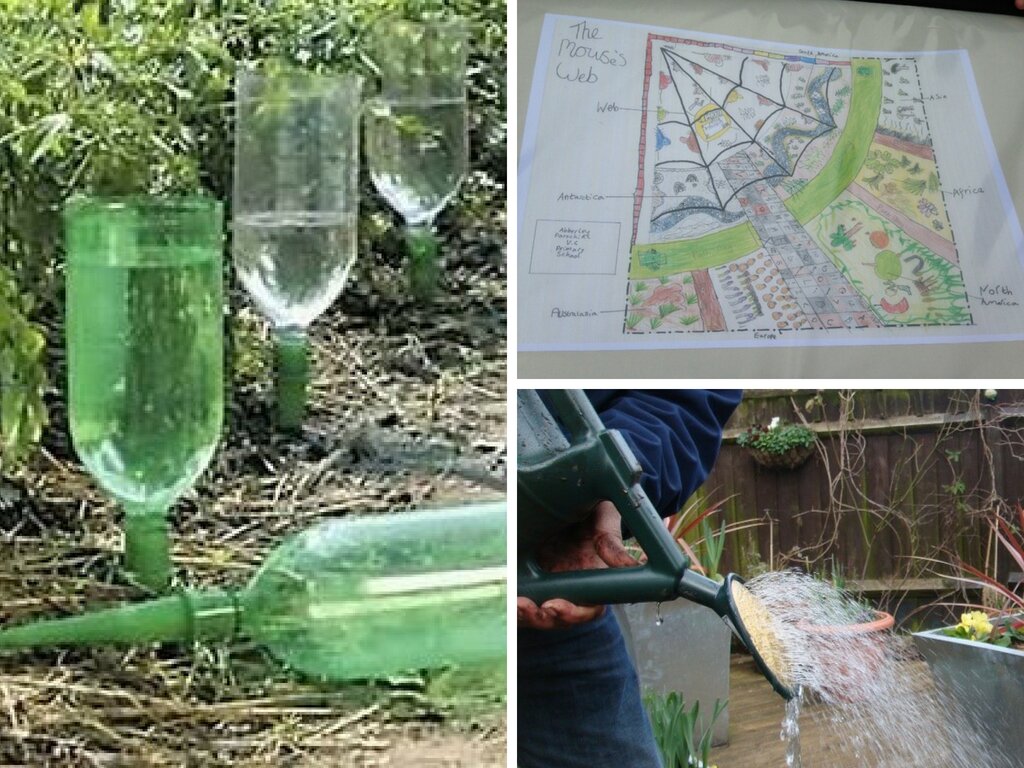Grow a School Garden – Oct/Nov 2018
Termly blog by Chris Collins on How to Create and Grow a School Garden
During the end of the summer months, though days are shorter, there is still plenty to keep us busy in our gardens.
Summer crops can be removed and dug into the compost bin and soil dug over and made ready for a fresh crop of plants for both winter and next spring.
What to plant now
Broad beans are a great crop to get in now, as the soil is still reasonably warm.
Quicker crops like Spinach, winter mix salad leaves and Chard can all be sown in open ground and can be grazed through the late winter months.
It may be worth investing a small amount of money in a roll of fleece from the local garden centre, this can be pinned down over your newly sown seeds and will protect them on cold nights and give them a strong start.
Any ground or raised beds you don’t plan to use over winter should be sown with a green manure. A mustard crop, sown thickly on empty ground can prevent weeds colonising your ground and can be dug into the soil, in spring to keep your soil healthy.
The onset of the dark months is no barrier to growing fresh food – don’t miss out on those beautiful autumn days.
Planting bulbs

The autumn is also the time of year to plant bulbs. These are the Jack-in-a-box of the plant world, staying low below the ground they are spring loaded to appear in the spring when the soil warms up.
For food plant some Garlic now but for colour there is an array of beautiful plants for your school to enjoy.
Set aside a piece of ground in a border, raised bed or even large pot. Plant a mix of bulbs to flower next year , Snowdrop (Jan, Feb) Crocus (Feb, March) Daffodil (March / April), Tulip (April / May) Allium (May).
You can get a run of three to four months of colour from bulbs and mixing the types really gives an amazing display.
There is further good news as bulb are pretty cheap to buy.
When it comes to planting and looking after bulbs there are two main rules, plant them the depth of a trowel’s head (up to the handle) and make sure you leave the foliage at least 6 weeks after they have stopped flowering. One final tip is, bulbs like Daffodil and Crocus can be naturalised, meaning they can be planted out permanently in a lawn or around the base of trees, where they will flower year after year.
- See more advice from Garden Organic about sourcing and planting organic bulbs here.
How to grow a Willow wall

A great winter project is to produce your own Willow wall. It’s worth finding out if any schools in your area are already growing Willow. If so, see if you can get some cuttings. These cuttings will need to be taken by a teacher.
They are last years growth on the plant, strong shoots (see photo) that have grown and ripened over the summer. Cut them at about 20 cm length with a straight cut below a node, this is a swelling on the wood were leaves will grow. At the other end of the cutting cut a sloped cut above a node, this way you’ll remember which way up your cutting goes.
Now it’s time to get the children involved. Bundle up the cuttings in groups of 20, bind them together with twine. Dig a trench 15cm deep on a north facing wall and fill it with 5 cm of sand. Bury the bundles in the trench and put back the soil. You should now have 5cm of Willow cuttings sticking out the ground, you can now forget all about these cuttings until next spring when you can dig them up, they will have rooted and you can plant your own Willow wall. I recommend 5 to 10 bundles to get you going. The other advantage of taking these cuttings is there is plenty of curriculum involved – biology and maths for a starter.
Making leaf mould compost

A further project for the autumn is to make some leaf mould. Don’t waste the great bonanza that is falling leaves.
A quick bit of construction involving four wooden stakes and some chicken wire makes a square cage. Get the children to collect any leaves in the school grounds and fill this ‘cage’ with leaves.
In a couple of seasons, you will have the perfect seed sowing compost. This uses a natural gift from Mother Nature, saves money and is great exercise!
- Find out about making leaf mould and how to use it on the Garden Organic website here.
Helping wildlife
Finally, remember our small friends the birds at this time of year, put out food and water to help them out, they are an important part of the garden.
Happy gardening everyone.
Chris Collins
Head of Organic Horticulture. Garden Organic






